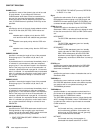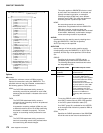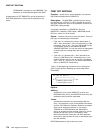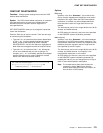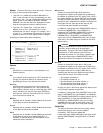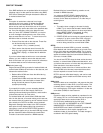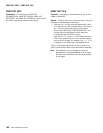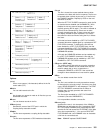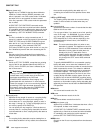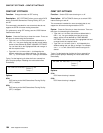CEMT SET DSNAME
If the BWO attributes are not updated after the restore of
a backup copy of a data set that was taken using BWO,
CICS fails a subsequent file open because the data set
is marked as down-level.
REMOve
This option is used when a data set is no longer
required on the local system. It deletes the data set
name block for the named data set. The REMOVE
option can be used only when there are no file control
resource definition entries that refer to the specified data
set. If any file definitions refer to the data set name
when you enter SET DSNAME REMOVE, you receive
an error message indicating that the use count of the
data set name block is not zero. To ensure that no file
definitions refer to the data set name:
Close all files that refer to the data set. These files
can be found using the command:
CEMT INQUIRE FILE(ᑍ) DSNAME(dsname)
Either remove the data set name from each file
entry (by over-typing the data set name with blanks
on the CEMT display), or discard the file definition
entirely.
If you have a base data set with one or more alternate
indexes, you are unable to remove the data set name
block for the base until you have removed all references
to the base data set and all references to paths.
RESetlocks (
vsam only
)
Purges shunted UOW log records for backout-failed and
commit-failed UOWs that hold locks on this data set, and
releases the retained locks:
Backout-failed UOWs are those that failed during
backout processing.
Commit-failed UOWs are those that have updated
RLS data sets, and have failed to release locks
during the second phase of 2-phase commit
syncpoint processing.
If you specify this option, you are accepting backout
failure and some loss of data integrity rather than
retaining locks and delaying transactions, and therefore
it should be used only as a last resort.
For backout-failed and commit-failed UOWs that hold
locks on the data set, all records relating to this data set
are removed from the system log and all retained record
locks held by this CICS for the data set are released.
Diagnostic messages are written to the CSFL transient
data queue for each backout-failed log record that is
removed as a result of the RESETLOCKS operation.
RESETLOCKS applies only to shunted UOW log records
that are classed as backout-failed and commit-failed.
Therefore it cannot be issued for a BDAM data set.
Backout-failed and commit-failed log records are not
shunted for BDAM data sets.
You might use RESETLOCKS if backout-failed or
commit-failed log records are holding up lost locks
recovery for the data set, and there is no other way of
resolving them.
Notes:
1. This option does not apply to shunted
in-doubt
UOWs. Try to resolve the shunted in-doubt UOWs
that hold locks on the data set in other ways before
issuing RESETLOCKS; for example, by using
COMMIT, BACKOUT, or FORCEUOW.
2. RESETLOCKS can fail during the commit phase (for
example, if an error occurs while CICS is trying to
release the RLS locks), in which case the UOWs
revert to being shunted as commit-failed UOWs.
RETRy
Specifies that shunted UOW log records, caused by
failed backout and commit processing as a result of the
failure of this data set, should be retried. This is similar
in operation to the EXEC CICS RESYNC command, but
applies to backout-failed and commit-failed UOWs only,
and not to in-doubt UOWs.
You should use RETRY when the data set has shunted
backout- or commit-failed UOWs associated with it, and
you believe that some or all of the data set problems are
either transient or have been resolved.
Messages, issued at the time of a data set failure that
causes UOWs to be shunted, recommend the actions
that are required to recover from the failure.
RETRY does not affect data integrity, and can be used
safely at any time to enable some failed recovery work
to complete.
UNAvailable
Marks the data set as unavailable, and prevents the data
set being opened in either RLS or non-RLS modes. This
command sets or unsets the availability indicator, which
is a local flag that a CICS region maintains in a data set
name block (DSNB) for each data set.
UNQuiesced
Causes the data set to be marked as unquiesced in the
ICF catalog. RLS or non-RLS mode files can be opened
against this data set, the access mode (RLS or
non-RLS) being established by the first open.
If a file has been set UNENABLED by a SET DSNAME
IMMQUIESCED or QUIESCED command,
UNQUIESCED sets it back to ENABLED, provided that
there have been no other explicit changes to the
enablement state in the meantime. This state change is
recorded in the CICS global catalog.
178 CICS Supplied Transactions



